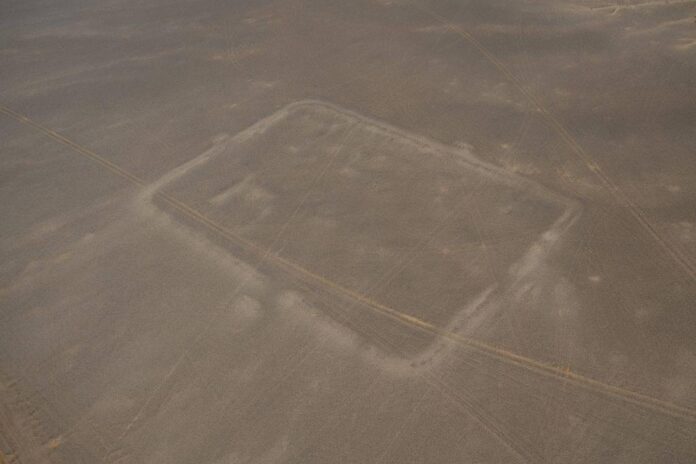Archaeologists have found three previously unknown Roman military camps in what is today Saudi Arabia, which they believe may have been an undocumented part of a campaign to annex the Nabataean Kingdom that began in the year C.E. 106. Working as part of the Endangered Archaeology in the Middle East and North African (EAMENA) project at the University of Oxford, in the U.K., the scientists used open-source satellite imagery from sources like Google Earth Pro.
Their findings are published in an article in the journal Antiquity, authored by four researchers at Oxford’s school of archaeology.
“Prior to our new paper there were only four known temporary Roman army camps from across Jordan, so the three new camps identified by our survey is an important addition,” said Michael Fradley, one of the authors, in an email. “What is particularly unusual is the identification of these new camps running in a straight line with near-identical distances between the camps, allowing us to confidently infer that they were linked as part of a single campaign and be able to assert their likely target of Dumat al-Jandal in Saudi Arabia.”

The location of the three newly discovered camps. Courtesy One of the Roman camps discovered by archaeologists. Courtesy Endangered Archaeology in the Middle East and North African (EAMENA).
The camps exhibited telltale indications of Roman design, including a playing-card shape and symmetrical entrances, and are located on the barren west side of the Valley of Sirhan, which spreads over Jordan and Saudi Arabia, and in central Jordan. There are almost no remains of any nearby structures, suggesting that the land has remained relatively untouched.
Historical sources indicate a caravan route that would mirror the route between the camps, say the authors, suggesting that the camps might have allowed the element of surprise to an attack on the Jawf region, or allowed a flanking maneuver in a broader campaign.

One of the Roman camps discovered by archaeologists. Courtesy Endangered Archaeology in the Middle East and North African (EAMENA).
“This research is important because it provides some of the clearest evidence to date that the Roman takeover of the Nabatean kingdom after 106 C.E. may not have been as peaceful as the surviving Roman histories suggest if we are correct in our assumption of when these camps were built, and that the Roman army may have actively campaigned to bring the kingdom under the control of Rome,” said Fradley.

























